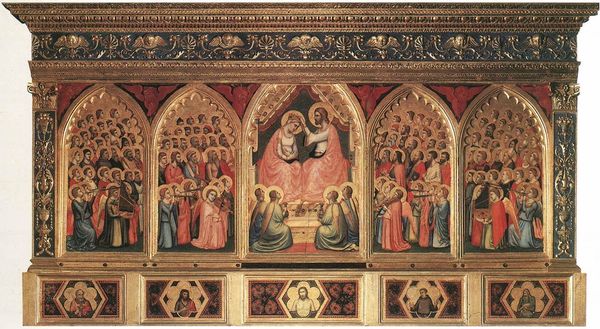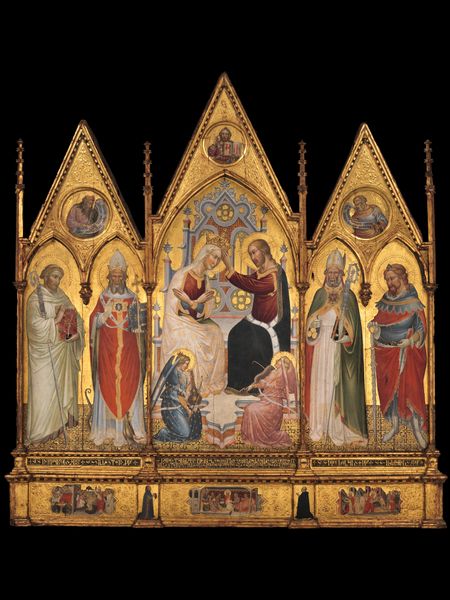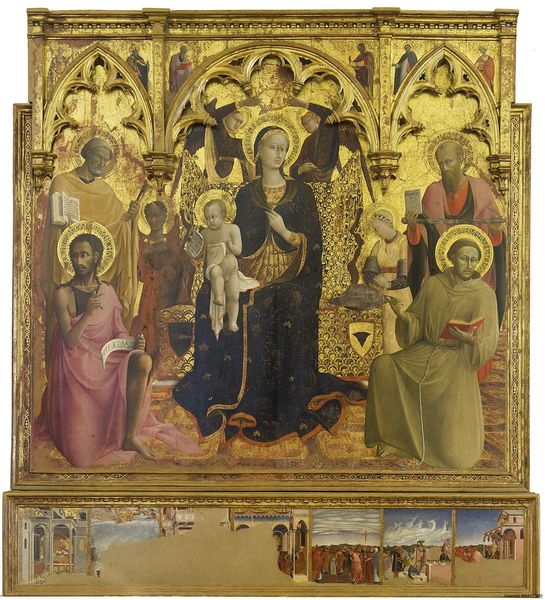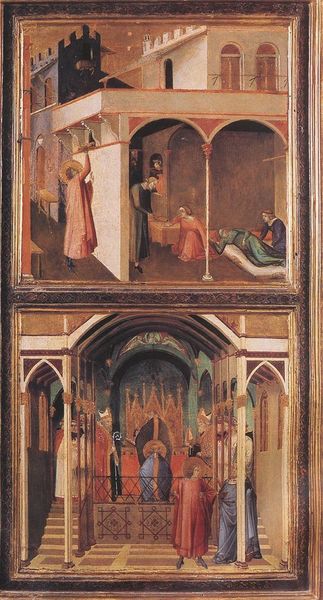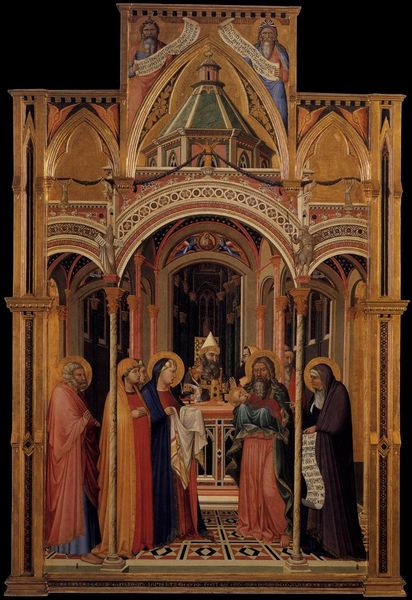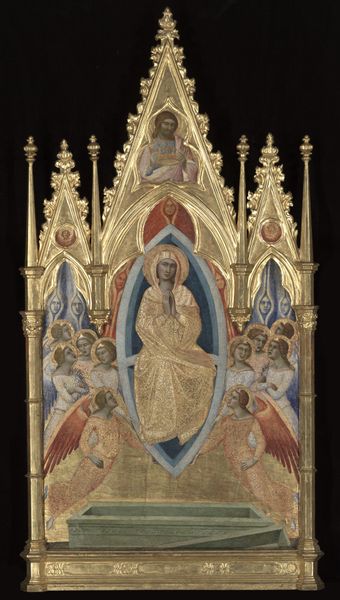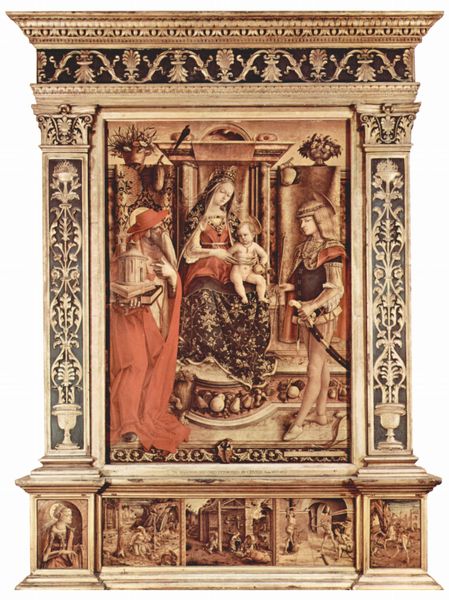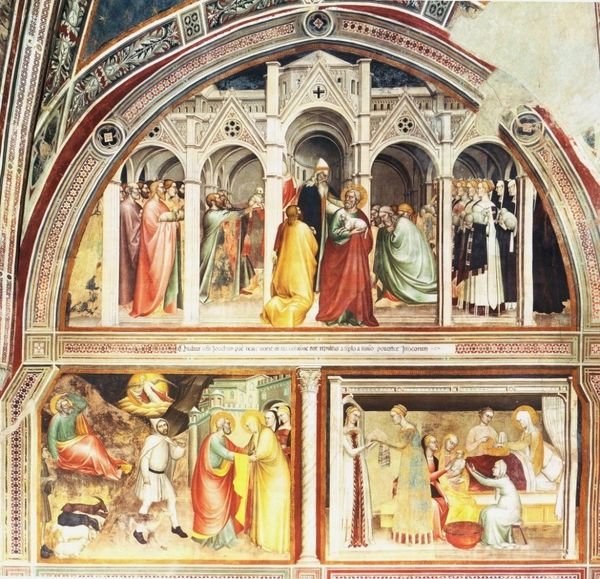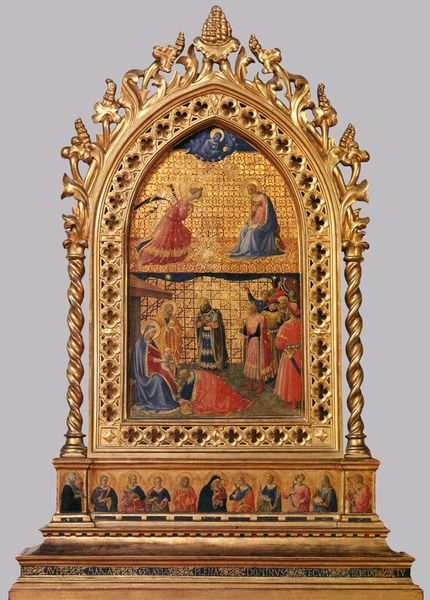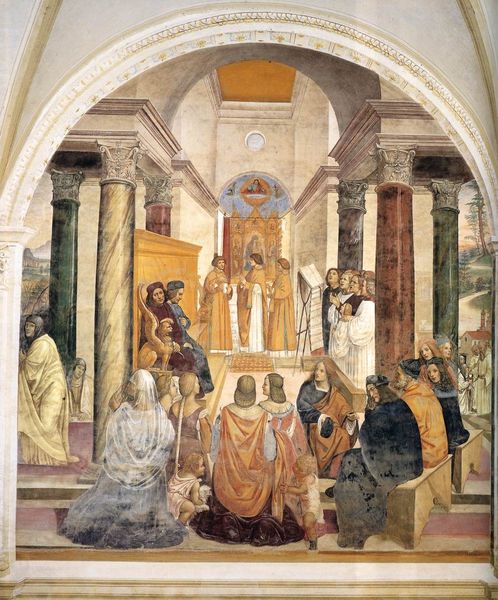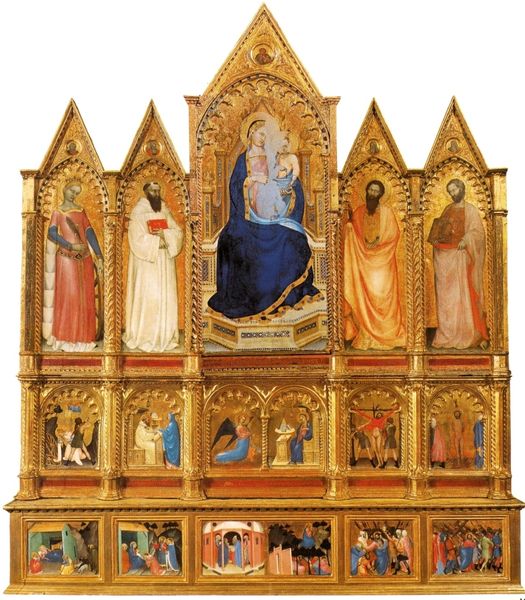
tempera, painting, fresco
#
byzantine-art
#
allegory
#
narrative-art
#
tempera
#
painting
#
sculpture
#
sienese-school
#
figuration
#
fresco
#
oil painting
#
history-painting
#
italian-renaissance
Copyright: Public domain
Curator: Ambrogio Lorenzetti's "St. Michael," created around 1335, immediately strikes me with its vibrant, albeit symbolically rigid, composition. Editor: Rigid is a good word! But there's also something almost feverish in the detail and coloring, particularly the gold leaf and the intricate patterns. How do the materials inform its creation and reception? Curator: Consider that this tempera-on-panel piece, now residing with other panels to form a polyptych, was intended to communicate specific social values through religious allegory. Saint Michael's defeat of the dragon signifies the triumph of good over evil. How do gender dynamics come into play? Editor: Absolutely, and this representation speaks volumes about the material culture of the time. The labor invested in producing this vibrant panel—mining pigments, layering gold, the technique involved in the tempera itself—demonstrates not only devotion but considerable material resources. What kind of craft was required, and who was responsible for doing it? Curator: Indeed. Let's not forget the politics either. Think of Saint Michael, almost presented as an active protector and judge. The work presents the power of the Church and its divine authority in worldly matters. He becomes an intersectional figure whose actions echo contemporary social and gender-related roles. The Virgin at the top reflects on these ideas, almost benevolently looking down on such exploits. Editor: Exactly! We can read these artistic choices through a lens of labor. Who ground the pigments? Who prepared the panels? The "preciousness" of the materials directly connects to the systems of extraction and craft production of the time. We must unpack those unseen processes as much as we analyze the final image. It’s crucial to acknowledge art-making as deeply rooted in social production. Curator: I agree, and bringing such ideas to the foreground, acknowledging the art as a collaborative output across both material means and established power structures gives us insight. Editor: Precisely, that's the power of material culture. Analyzing art means connecting image to material, production, and socio-economic relationships. Hopefully, these layers will enrich a visit and foster new thinking.
Comments
No comments
Be the first to comment and join the conversation on the ultimate creative platform.

